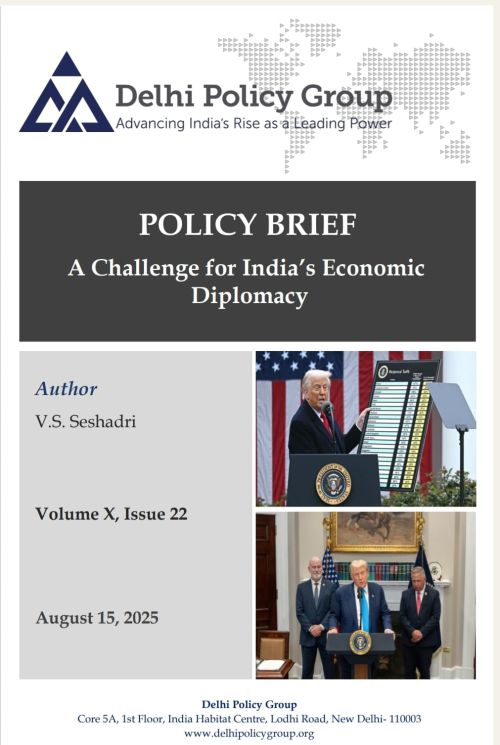A Challenge for India’s Economic Diplomacy
In this brief, the author addresses the imposition of a 25% ‘reciprocal tariff’ by the Trump administration on imports from India, that may soon get clubbed with an additional 25% tariff on account of imports by India of Russian oil. Assuming that the ‘reciprocal tariffs’ were actually imposed for trade-related concerns and not for other considerations, the brief goes on to suggest a fresh ministerial-level approach aimed at resolving the issue with the US. Left unaddressed, the livelihoods of workers, particularly from MSMEs and the farm sector, could be at risk.
By examining the deals reached by other countries with the US in recent weeks, and taking into account India’s own sensitivities and interests, the author points to a solution-based approach and suggests the elements which could form part of a possible ‘deal’ between India and the US. These will obviously need further consultation and development, both inter-ministerially and with the industry and farm interests.
In respect of the agriculture sector, the author identifies areas in which imports are already taking place, which can be further expanded considering India’s own economic needs and priorities. The importance of being seen as addressing the imbalance in bilateral agriculture trade should be a key consideration here. In this vein, he also suggests offering limited access in the dairy sector, but in a manner that can also reform India’s own dairy sector.
On non-agricultural products, apart from the tariff and related concessions that may have already been offered to the US side during the five rounds of negotiations thus far held, there is need for looking at areas where Indian companies already present in the US can further consolidate their investments in the strategic sectors of pharmaceuticals, steel and aluminium. Similarly, a clubbing together of India’s intended purchases and deals already in the pipeline on energy, commercial aircraft, defence hardware and nuclear plants, could form a sizeable package.
In return for these offers, India should seek the lowest tariffs possible for countries with a trade surplus, something the US has already granted to the EU, including on autos.
On the Russia oil imports related levy, the author makes the point that if we can clear the air with a mutually beneficial deal on ‘reciprocal tariffs’, and there is progress in negotiations for ending the Ukraine conflict, there will be some impetus for its removal. In any case, India should for now seek a pause on this additional tariff beyond August 27.
To read this DPG Policy Brief Vol. X, Issue 22, please click “A challenge for India’s Economic Diplomacy”.



